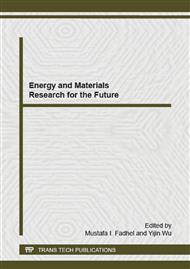p.75
p.79
p.84
p.93
p.96
p.101
p.107
p.117
p.123
Novel Microbial Based Low Energy Green Building Material Production Technology
Abstract:
The present world cannot be imagined without construction industry. On other hand we are not able to prevent impact of construction on the environment due to usage of its key component that is cement, which plays a greater role in the emission of greenhouse gases. Every tonne of Ordinary Portland Cement (OPC) that is produced releases on average a similar amount of CO2 into the atmosphere, or in total roughly 6% of all man-made carbon emissions. One of the purposes of research should be to lower the amount of cement during construction without compromising the quality of building structure. Microbial metabolic activities often contribute to selective cementation by biomineralization. In the present study, a novel microbial based low energy green building material based on microbially induced calcium carbonate precipitation (MICP) has been reported that is known as “biocement”. Biocement has enormous potential and usage in building materials and structures with potential to partially replace the cement. The research demonstrates that production of biocement can enhance the durability of building structures in addition to have least impact on the environment.
Info:
Periodical:
Pages:
96-100
Citation:
Online since:
February 2015
Authors:
Keywords:
Price:
Сopyright:
© 2015 Trans Tech Publications Ltd. All Rights Reserved
Share:
Citation:


